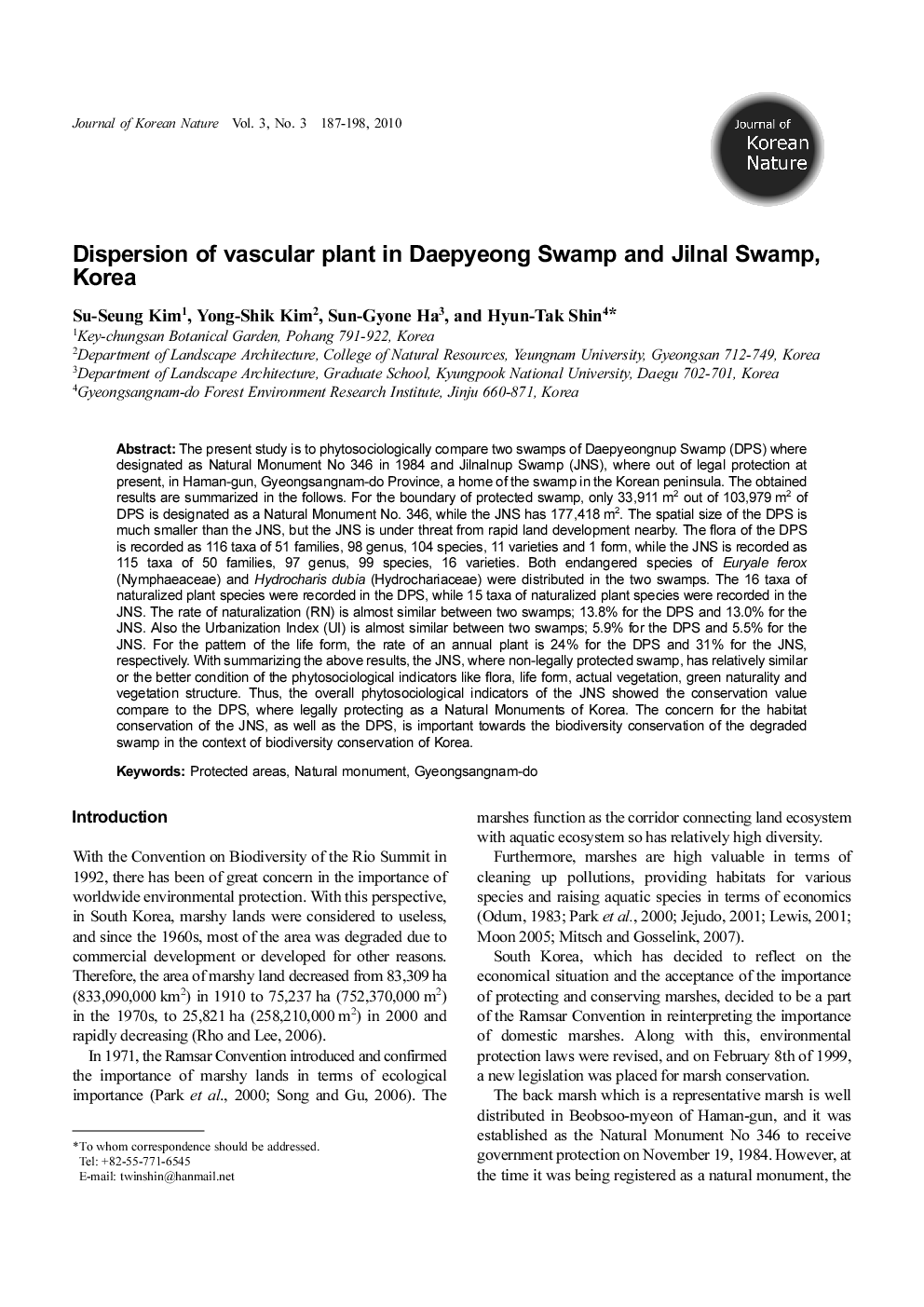| کد مقاله | کد نشریه | سال انتشار | مقاله انگلیسی | نسخه تمام متن |
|---|---|---|---|---|
| 4399570 | 1306862 | 2010 | 12 صفحه PDF | دانلود رایگان |

The present study is to phytosociologically compare two swamps of Daepyeongnup Swamp (DPS) where designated as Natural Monument No 346 in 1984 and Jilnalnup Swamp (JNS), where out of legal protection at present, in Haman-gun, Gyeongsangnam-do Province, a home of the swamp in the Korean peninsula. The obtained results are summarized in the follows. For the boundary of protected swamp, only 33,911 m2 out of 103,979 m2 of DPS is designated as a Natural Monument No. 346, while the JNS has 177,418 m2. The spatial size of the DPS is much smaller than the JNS, but the JNS is under threat from rapid land development nearby. The flora of the DPS is recorded as 116 taxa of 51 families, 98 genus, 104 species, 11 varieties and 1 form, while the JNS is recorded as 115 taxa of 50 families, 97 genus, 99 species, 16 varieties. Both endangered species of Euryale ferox (Nymphaeaceae) and Hydrocharis dubia (Hydrochariaceae) were distributed in the two swamps. The 16 taxa of naturalized plant species were recorded in the DPS, while 15 taxa of naturalized plant species were recorded in the JNS. The rate of naturalization (RN) is almost similar between two swamps; 13.8% for the DPS and 13.0% for the JNS. Also the Urbanization Index (UI) is almost similar between two swamps; 5.9% for the DPS and 5.5% for the JNS. For the pattern of the life form, the rate of an annual plant is 24% for the DPS and 31% for the JNS, respectively. With summarizing the above results, the JNS, where non-legally protected swamp, has relatively similar or the better condition of the phytosociological indicators like flora, life form, actual vegetation, green naturality and vegetation structure. Thus, the overall phytosociological indicators of the JNS showed the conservation value compare to the DPS, where legally protecting as a Natural Monuments of Korea. The concern for the habitat conservation of the JNS, as well as the DPS, is important towards the biodiversity conservation of the degraded swamp in the context of biodiversity conservation of Korea.
Journal: Journal of Korean Nature - Volume 3, Issue 3, September 2010, Pages 187-198